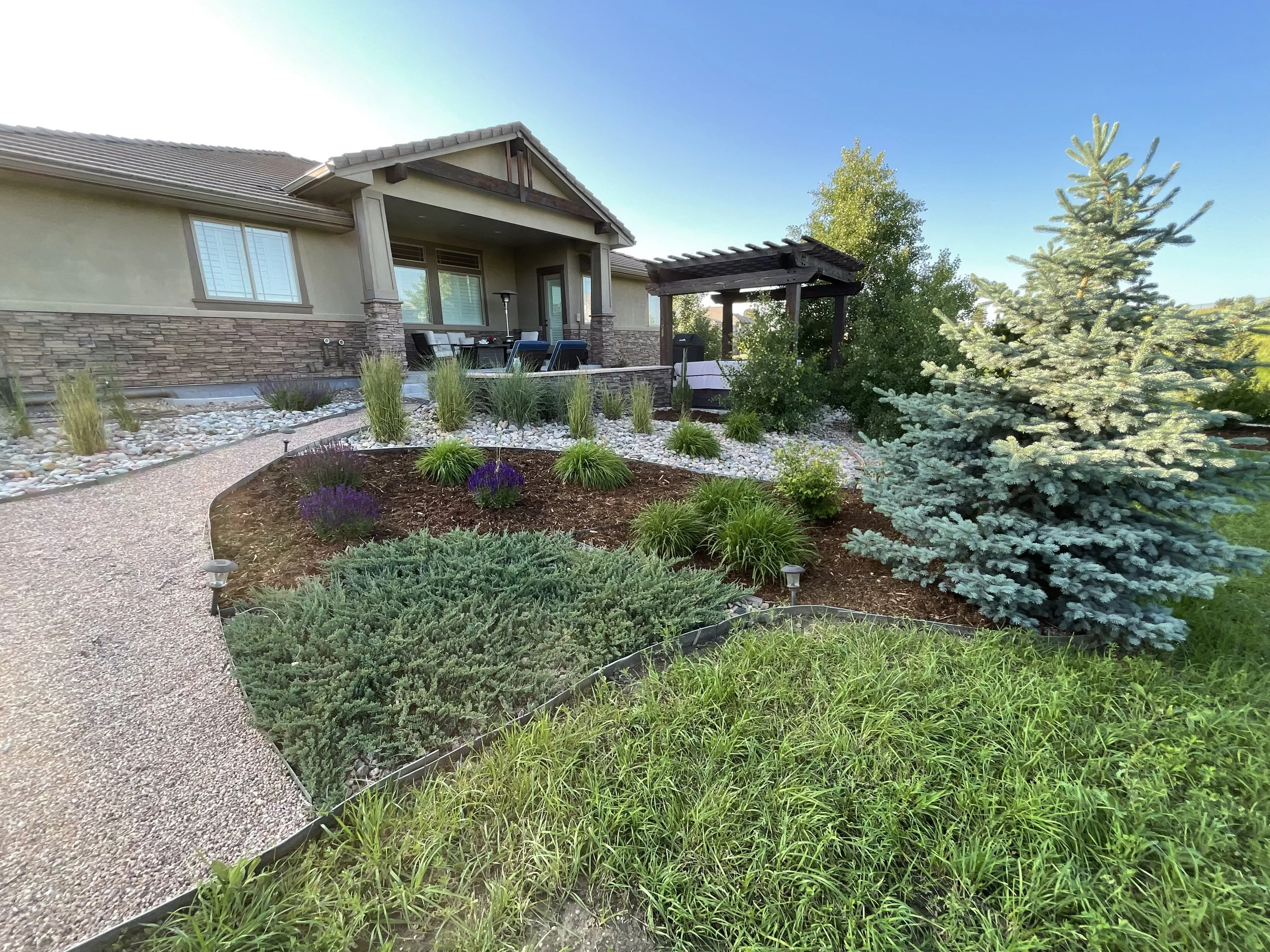Plant Watering and Care Guide
Please note that all species of trees, perennials, annuals, and sod require different watering patterns. This guide reflects general recommendations and averages. Monitor your specific plants and adjust as necessary based on soil, sun exposure, and local weather.
TREES
Watering:
Newly planted trees need a deep soak to help their roots grow downward, not outward. A good rule of thumb is 10 gallons of water per inch of trunk diameter, twice a week. This means if your tree has a 2-inch trunk, it needs 20 gallons of water each time you water.
Once a tree is established (usually after 1–2 years), it only needs deep watering about every other week using 15 gallons per inch of trunk diameter.
Tips:
Water at the drip line (the area under the outermost branches), not right up against the trunk.
Use a slow trickle, so water soaks deep and doesn’t run off.
Pruning:
Light pruning of dead, broken, or rubbing branches can be done at any time.
Major pruning should be done in late winter or very early spring, before leaves come in. This helps avoid stress and disease.
Avoid cutting large limbs or using “topping” techniques. These can permanently harm your tree.
Perennials & Annuals
Watering:
Most newly planted perennials and annuals need about 2 gallons of water per week. This can be spread out over two or three waterings.
Larger shrubs may need up to 10–12 gallons per week, especially during hot weather or dry spells.
Always check the soil first—if it feels moist 1–2 inches below the surface, wait before watering again.
Tips:
Water 2-5 inches away from the base of the plant to avoid wetting the leaves, which can lead to fungus or mildew.
Early morning watering is best. It gives the plant time to dry off before nightfall.
Pruning & Deadheading:
Deadheading (removing spent flowers) helps keep annuals blooming longer.
Most perennials benefit from being cut back in late fall after the first frost or in early spring before new growth starts.
Some perennials, like ornamental grasses or black-eyed Susans, can be left for winter interest and cut back in spring.
Sod (New Lawn Installation)
Initial Watering (Same Day):
As soon as the sod is installed, soak it deeply. Water every zone for 45–60 minutes. This saturates the sod and the soil below to help the roots start bonding with the ground.
First 2 Weeks:
Water at least 3 times per day, every day.
Run sprinklers 15 minutes for pop-up heads or 30 minutes for rotary heads each cycle.
Your goal: Keep the sod constantly moist, not soggy, but never let it dry out.
Weeks 3–4:
Begin cutting back on watering frequency slowly.
Drop to once a day, then every other day by the end of week 4.
Begin mowing once the grass reaches about 3” tall. Make sure the ground is firm enough to walk or mow on without leaving deep footprints.
Signs Your Sod Needs More Water:
Grass looks bluish-purple
Blades wilt or curl
Sod gaps open up
Grass turns straw-colored or shows footprints when walked on
Aftercare Tips:
Avoid foot traffic for the first 3 weeks—especially kids, pets, and lawn equipment.
Pet urine causes yellow spots. Try to direct pets to a different area of the yard.
Don’t fertilize new sod until after the first mow, and use a starter or balanced fertilizer.
Winter Watering (Nov-Mar)
Colorado winters are dry, and plants can suffer if they don’t get moisture—even while dormant.
Water on warm, sunny days (above 40°F), once or twice a month.
Focus on newly planted trees, shrubs, and perennials.
Water midday, so moisture has time to absorb before freezing nighttime temps.
Tip: If there's no snow for 3–4 weeks, your plants are likely thirsty—especially evergreens and recently planted material.
Fertilization
New plantings generally don’t need fertilizer right away. Over-fertilizing can burn tender roots.
For trees and shrubs, wait 4–6 weeks or until the following spring before feeding.
Use a slow-release, balanced fertilizer (e.g. 10-10-10) as directed.
For lawns, apply starter fertilizer after the first mow. Use sparingly and follow label directions.
General Plant Care Tips
Check the moisture before watering. Stick your finger 2–3 inches into the soil. If it’s damp, hold off.
Drip irrigation or soaker hoses are the most efficient ways to water. They keep water in the root zone and reduce evaporation.
Shady areas need much less water than full sun spots.
Avoid watering late in the day, especially in cooler weather—it increases the chance of mildew and fungal issues.
Monitor plants weekly, especially during the first 6–8 weeks after planting

